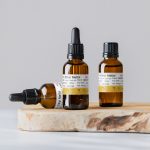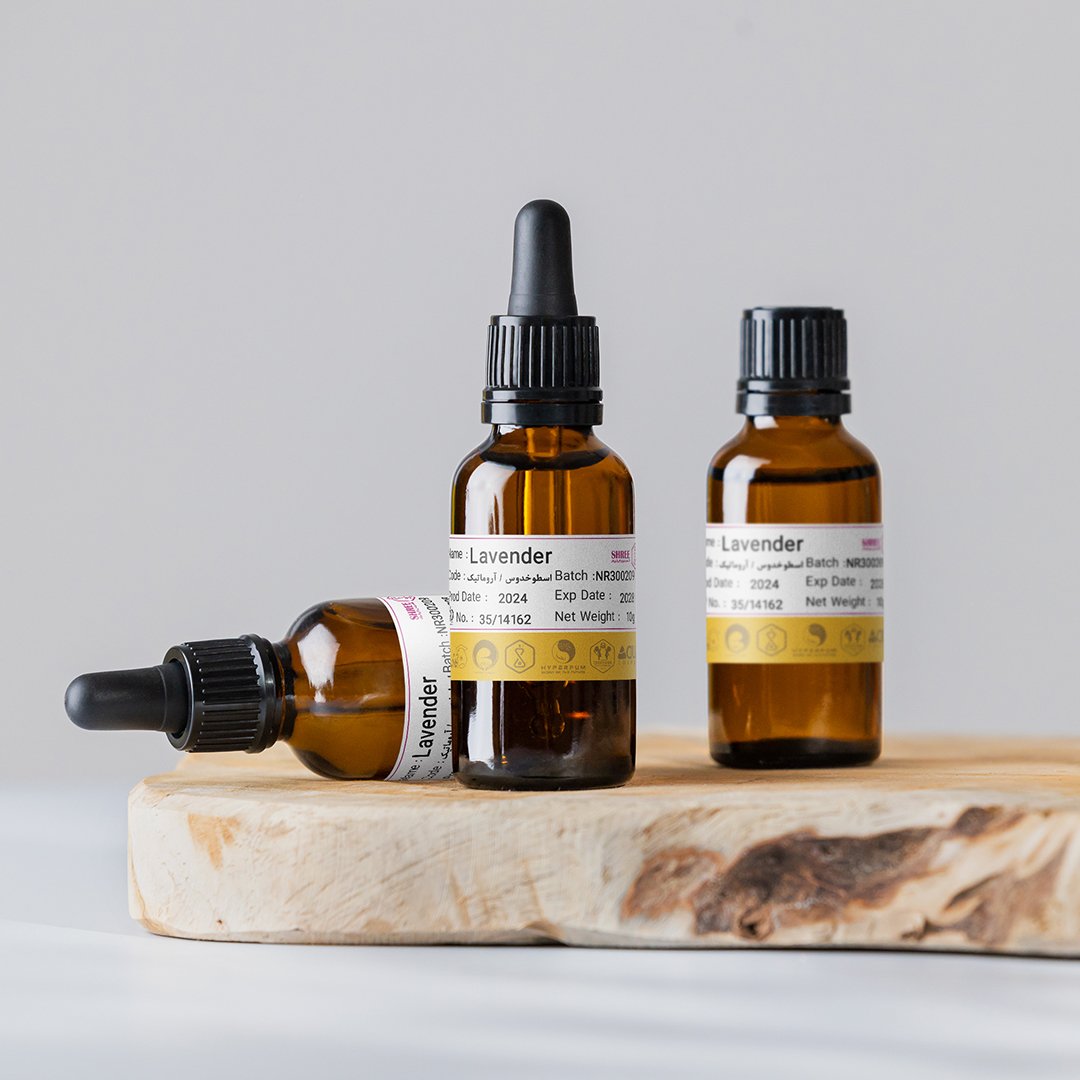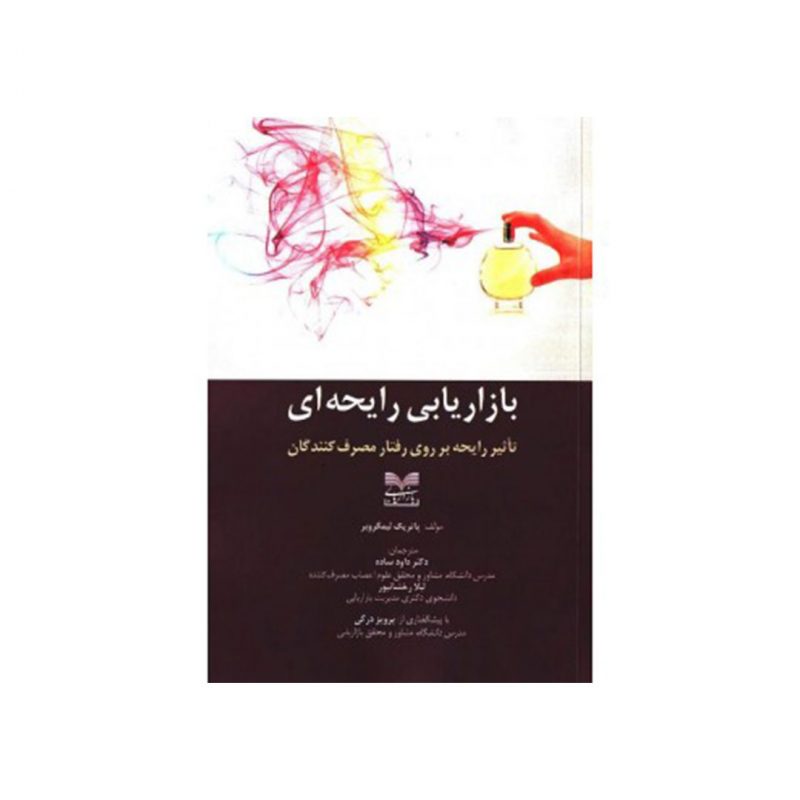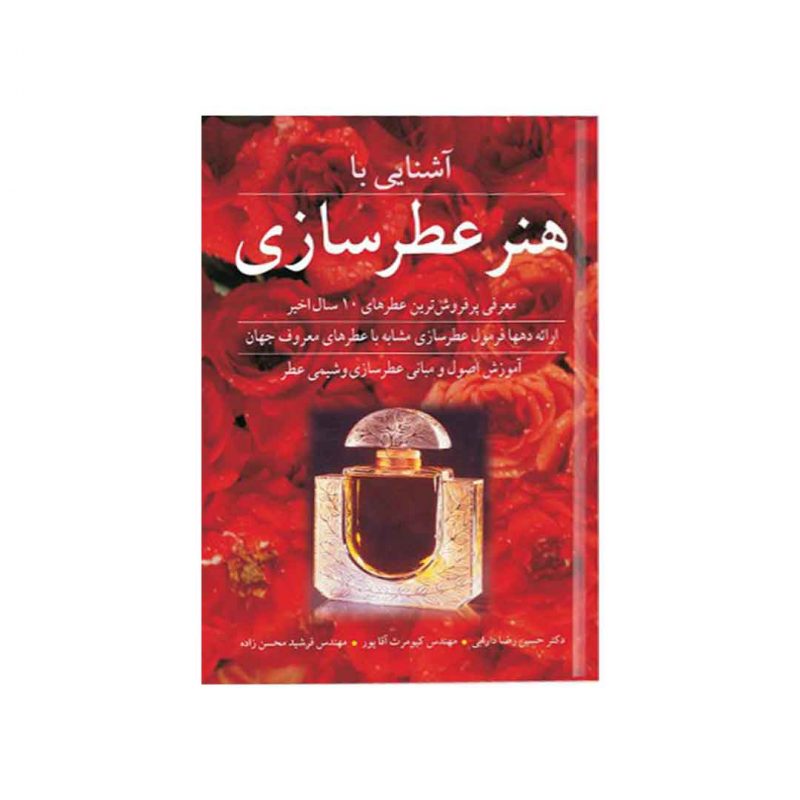
نت اتیل مالتول
30 تیر 1403
نت اکالیپتوس
30 تیر 1403نت اسطوخدوس
CAS N° : 8000-28-0
Presentation
Latin name : Lavandula officinalis
Botanical profile : Lavender is a plant belonging to the Labieae family and the Lavandula genus
Geographic origin : The largest lavender productions are located in the South of France (1st world producer), Spain, Bulgaria or China. Russia, Hungary and Tasmania are also producers, to a lesser extent
Chemotypes : There are several varieties of lavender: the population and the clonal. The difference comes mainly from genetics and historical crosses. The population lavender is the historical variety. It has never been crossed and is therefore recognizable by plants of various aspects and very heterogeneous fields as the reproduction is sexed and made from seeds. The clonal lavender comes from population lavender cuttings. Very homogeneous fields and similar plants are obtained with this method. It is mainly produced in Bulgaria, but it is possible to find some in France. Olfactively, the difference is notable. Clonal lavender is poorer, less varied. Among the clonals, there are three major species: the maillete, the matherone and the diva, differentiated by their Ocimene level. Among the populations, we distinguish the rapido, the sara and the carla, which contain an intermediate rate of Ocimene. Overall, lavender has 32 different species linked to the genus Lavandula, not counting hybrids. In perfumery, there are especially hybrid species such as Lavandin with a terpenic and camphorated smell, and the Aspic, even more camphorated (see Lavandin and Aspic)
Extraction process : Lavender is a 20 to 60 cm tall herbaceous sub-shrub with evergreen leaves and blue-purple flowers that bloom from July-August. The production of lavender requires a certain altitude, located between 600 and 1500 meters. After declining between the 1960s and 2000s, production is now increasing thanks to the Bulgarian productions among others, twice as big as French productions. Cultivation and extraction are done in August-September, using a traditional or a green ground process. The traditional process consists in leaving the plants to dry under the sun after cutting them. This technique allows to concentrate all the heavy olfactive compounds as the terpenes have time to evaporate. The resultant smell is hotter and more coumarin. The green ground process (ensilage) consists in extracting the plants directly after cutting them. Therefore, the smell is greener and cooler than if the plant was dried in the sun beforehand. In both cases, lavender essential oil is obtained by decantation at the distillation outlet. The extraction yield of lavender is lower than the lavandin, because lavender contains fewer flower heads. Its extraction yield of 40 kg of essential oil per hectare does not equal the lavender, which has a yield of 120 kg of oil per hectare cultivated (Aspic has a yield of 50 kg / ha). The essential oil can be ground to be obtained without terpene. It can also be acetylated to increase its level of Linalyl Acetate to be extracted later. The lavender absolute yield is between 1 and 2.2%, and it has a very green, herbaceous smell as well as a great tenacity
Major Components : Linalyl Acetate (42-52%) Linalool (32-40%) Ocimene (≈4%) Terpinen-4-ol (≈4%) Lavandulyl Acetate (≈3%) Lavandulol (≈3%) 1,8-Cineole (≈2%) Borneol (≈1%) Plotter(s) : Lavandulol and Lavandulyl Acetate
مشخصات
نام لاتین: Lavandula officinalis
مشخصات گیاه شناسی: اسطوخودوس گیاهی از خانواده Labieae و تیره اسطوخودوس است.
منشاء جغرافیایی: بزرگترین تولیدات اسطوخودوس در جنوب فرانسه (اولین تولیدکننده جهانی)، اسپانیا، بلغارستان یا چین واقع شده است. روسیه، مجارستان و تاسمانی نیز تا حدی تولیدکننده هستند
کموتیپ ها: انواع مختلفی از اسطوخودوس وجود دارد: جمعیت و کلونال. این تفاوت عمدتاً از ژنتیک و تلاقی های تاریخی ناشی می شود. جمعیت اسطوخودوس تنوع تاریخی است. هرگز تلاقی نداشته است و بنابراین توسط گیاهان با جنبه های مختلف و مزارع بسیار ناهمگن قابل تشخیص است زیرا تولیدمثل جنسیت شده و از دانه ها ساخته می شود. اسطوخودوس کلونال از قلمه های اسطوخودوس جمعیتی به دست می آید. مزارع بسیار همگن و گیاهان مشابه با این روش به دست می آید. عمدتاً در بلغارستان تولید می شود، اما می توان مقداری از آن را در فرانسه پیدا کرد. از نظر بویایی، تفاوت قابل توجه است. اسطوخودوس کلونال فقیرتر است، تنوع کمتری دارد. در میان کلونال ها، سه گونه اصلی وجود دارد: میلت، ماترون و دیوا که بر اساس سطح Ocimene آنها متمایز می شوند. در میان جمعیتها، راپیدو، سارا و کارلا را متمایز میکنیم که دارای نرخ متوسطی از Ocimene هستند. به طور کلی، اسطوخودوس دارای 32 گونه مختلف مرتبط با جنس اسطوخودوس است، بدون احتساب هیبریدها. در عطرسازی، گونههای هیبریدی مخصوصاً مانند لاواندین با بوی ترپنیک و کافوردار، و اسپیک، حتی بیشتر کافوردار وجود دارد (به لاواندین و اسپیک مراجعه کنید).
فرآیند استخراج: اسطوخودوس یک زیر درختچه علفی به ارتفاع 20 تا 60 سانتی متر با برگ های همیشه سبز و گل های آبی مایل به بنفش است که از جولای تا آگوست شکوفا می شود. تولید اسطوخودوس نیاز به ارتفاع معینی دارد که بین 600 تا 1500 متر قرار دارد. پس از کاهش بین دهههای 1960 و 2000، تولید در حال حاضر به لطف تولیدات بلغارستانی، دو برابر تولیدات فرانسوی، در حال افزایش است. کشت و استخراج در اوت-سپتامبر با استفاده از فرآیند سنتی یا زمین سبز انجام می شود. فرآیند سنتی این است که پس از قطع کردن گیاهان، آنها را در زیر نور خورشید قرار می دهیم تا خشک شوند. این تکنیک اجازه می دهد تا تمام ترکیبات بویایی سنگین را متمرکز کنید زیرا ترپن ها زمان تبخیر شدن دارند. بوی حاصل تندتر و کومارین بیشتری دارد. فرآیند زمین سبز (سیلو کردن) شامل استخراج مستقیم گیاهان پس از برش است. بنابراین بوی آن سبزتر و خنک تر از زمانی است که گیاه از قبل در آفتاب خشک شده باشد. در هر دو مورد، اسانس اسطوخودوس از طریق تخلیه در خروجی تقطیر به دست می آید. بازده استخراج اسطوخودوس کمتر از اسطوخودوس است، زیرا اسطوخودوس حاوی سر گل کمتری است. عملکرد استخراج آن 40 کیلوگرم اسانس در هکتار برابر با اسطوخودوس نیست که دارای 120 کیلوگرم روغن در هکتار کشت شده است (Aspic دارای عملکرد 50 کیلوگرم در هکتار). اسانس را می توان آسیاب کرد تا بدون ترپن به دست آید. همچنین می توان آن را استیله کرد تا سطح لینالیل استات آن را افزایش دهد تا بعداً استخراج شود. بازده مطلق اسطوخودوس بین 1 تا 2.2 درصد است و بوی بسیار سبز و علفی و همچنین استحکام زیادی دارد.
اجزای اصلی: لینالیل استات (42-52%) لینالول (32-40%) اوسیمن (≈4%) Terpinen-4-ol (≈4%) لاواندولیل استات (≈3%) لاواندولول (≈3%) 1.8 -سینئول (≈2%) بورنئول (≈1%) پلاتر(ها): لاواندولول و لاواندولیل استات
Uses
Uses in perfumery : Used in fougere perfumes, with Geranium EO, Coumarin and Oak Moss Absolute, in laundry and cosmetics for men to give a clean effect
Other comments : Note that there is a French PDO designation, obtained for a lavender produced at 800 meters above the sea level, guaranteed 100% pure and natural, produced in a defined area and having specific chromatographic characteristics. The label is awarded by a jury of experts after an olfactory evaluation. Other labels such as the ECO-Cert, Qualité-France and SOCOTEC labels can be attributed to organic lavender absolute productions. On the lavender plant population, the leafhopper, an insect feeding on plant sap, bites the plants causing their death. Kaolin is a pesticide used to control this insect, which does not attack clonal lavender plants. Many adulterations can occur regarding the absolute lavender. It can be adulterated by other types of lavender with a lower cost, by a Lavandin EO, by addition of synthetic compounds such as Linalyl Acetate, Linalool, Coumarin, Ocimene or other terpenes. Compliance with production standards is validated by chromatographic analysis. Each molecule must have a minimum and maximum rate in the produced absolute. For example, for Lavandula angustifolia, Linalool should be present between 25 and 38% in the essential oil, Linalyl Acetate between 25 and 38% and cis-β-Ocimene between 4 and 10%. Physicochemical properties are also to be respected, such as the ester level (between 38 and 58%) or the optical rotation for example
Volatility : Head/Heart
Appearance : Colorless liquid
Stability : Solubility issues in perfumes The esters identified in this raw material can form their corresponding acid in stability tests The terpenes identified in this raw material can polymerize when they are oxidized
Aromatherapy : Informations provided below are taken from reference works in aromatherapy. They are given for information purposes only and can not constitute medical information, nor engage the responsibility of ScenTree. Lavender essential oil has antispasmodic, calming, hypotensive, anti-inflammatory properties and is indicated in cases of nervousness (nervous spasms), burns, ulcers and muscle cramps among others.
استفاده
موارد استفاده در عطرسازی: مورد استفاده در عطرهای فوگر، همراه با Geranium EO، Coumarin و Oak Moss Absolute، در لباسشویی و لوازم آرایشی برای مردان برای ایجاد جلوه ای تمیز.
سایر توضیحات: توجه داشته باشید که یک نام فرانسوی PDO وجود دارد که برای اسطوخودوس تولید شده در ارتفاع 800 متری از سطح دریا، تضمین شده 100٪ خالص و طبیعی، تولید شده در یک منطقه تعریف شده و دارای ویژگی های کروماتوگرافی خاص است. این برچسب توسط هیئت داوران متخصص پس از ارزیابی بویایی اعطا می شود. برچسب های دیگر مانند برچسب های ECO-Cert، Qualité-France و SOCOTEC را می توان به تولیدات مطلق اسطوخودوس ارگانیک نسبت داد. در جمعیت گیاه اسطوخودوس، حشرهای که از شیره گیاه تغذیه میکند، گیاه را نیش میزند و باعث مرگ آنها میشود. کائولن آفت کشی است که برای کنترل این حشره استفاده می شود و به گیاهان کلونال اسطوخودوس حمله نمی کند. بسیاری از تقلبات ممکن است در مورد اسطوخودوس مطلق رخ دهد. می توان آن را با سایر انواع اسطوخودوس با هزینه کمتر، توسط یک Lavandin EO، با افزودن ترکیبات مصنوعی مانند Linalyl Acetate، Linalool، Coumarin، Ocimene یا سایر ترپن ها تقلب کرد. مطابقت با استانداردهای تولید با تجزیه و تحلیل کروماتوگرافی تایید می شود. هر مولکول باید دارای حداقل و حداکثر نرخ در مطلق تولید شده باشد. به عنوان مثال، برای Lavandula angustifolia، لینالول باید بین 25 تا 38 درصد در اسانس، لینالیل استات بین 25 تا 38 درصد و cis-β-Ocimene بین 4 تا 10 درصد وجود داشته باشد. خواص فیزیکوشیمیایی نیز باید رعایت شود، مانند سطح استر (بین 38 تا 58٪) یا چرخش نوری برای مثال.
فرار: سر/قلب
شکل ظاهری: مایع بی رنگ
پایداری: مشکلات حلالیت در عطرها استرهای شناسایی شده در این ماده خام می توانند اسید مربوطه خود را در آزمایشات پایداری تشکیل دهند.
آروماتراپی: اطلاعات ارائه شده در زیر از آثار مرجع در رایحه درمانی گرفته شده است. آنها فقط برای مقاصد اطلاعاتی ارائه می شوند و نمی توانند اطلاعات پزشکی باشند و مسئولیت ScenTree را بر عهده نگیرند. اسانس اسطوخودوس دارای خواص ضد اسپاسم، آرام بخش، کاهش دهنده فشار خون، ضد التهاب است و در موارد عصبی (اسپاسم عصبی)، سوختگی، زخم و گرفتگی عضلانی از جمله موارد دیگر کاربرد دارد.
Regulations
EINECS number : 97722-12-8
FEMA number : 2622
Allergens : Linalool – D-Limonene – Geraniol
IFRA : This ingredient is restricted by IFRA





نقد و بررسیها
هنوز بررسیای ثبت نشده است.